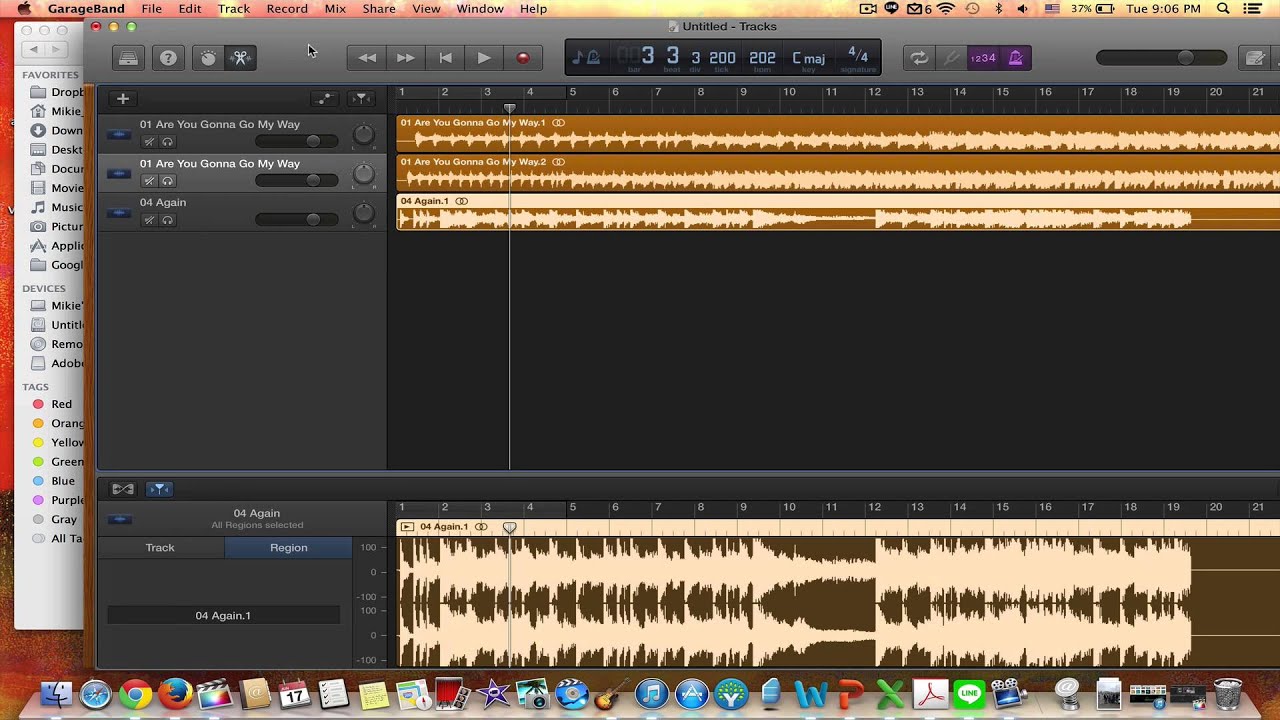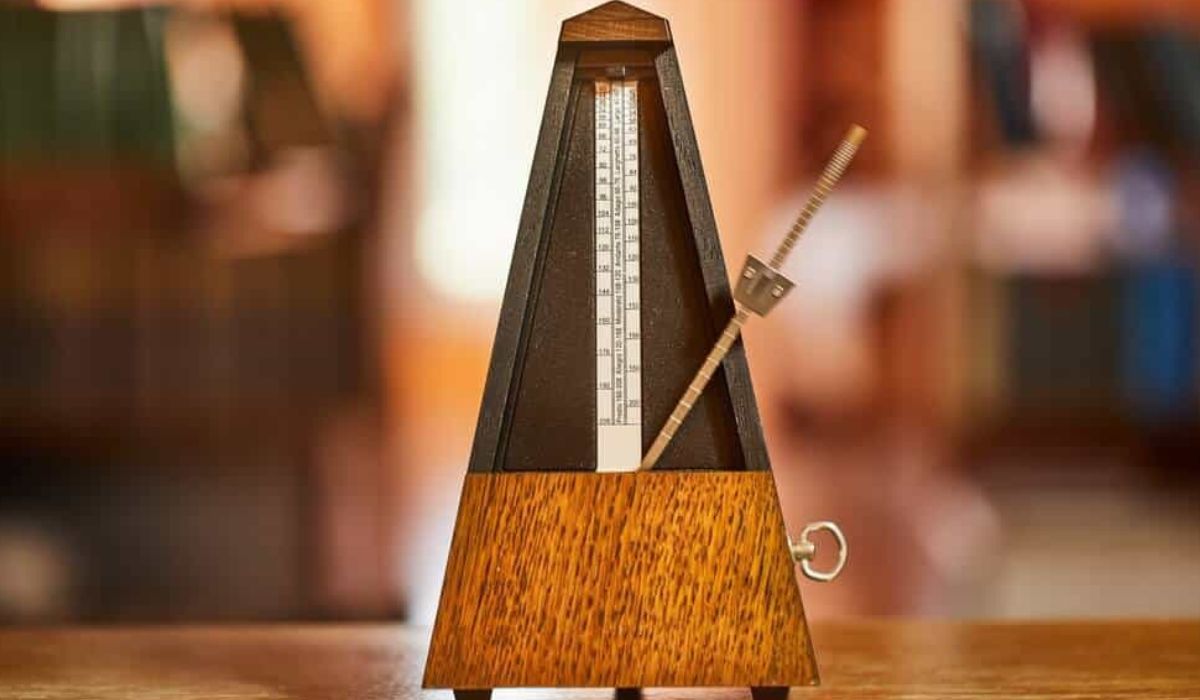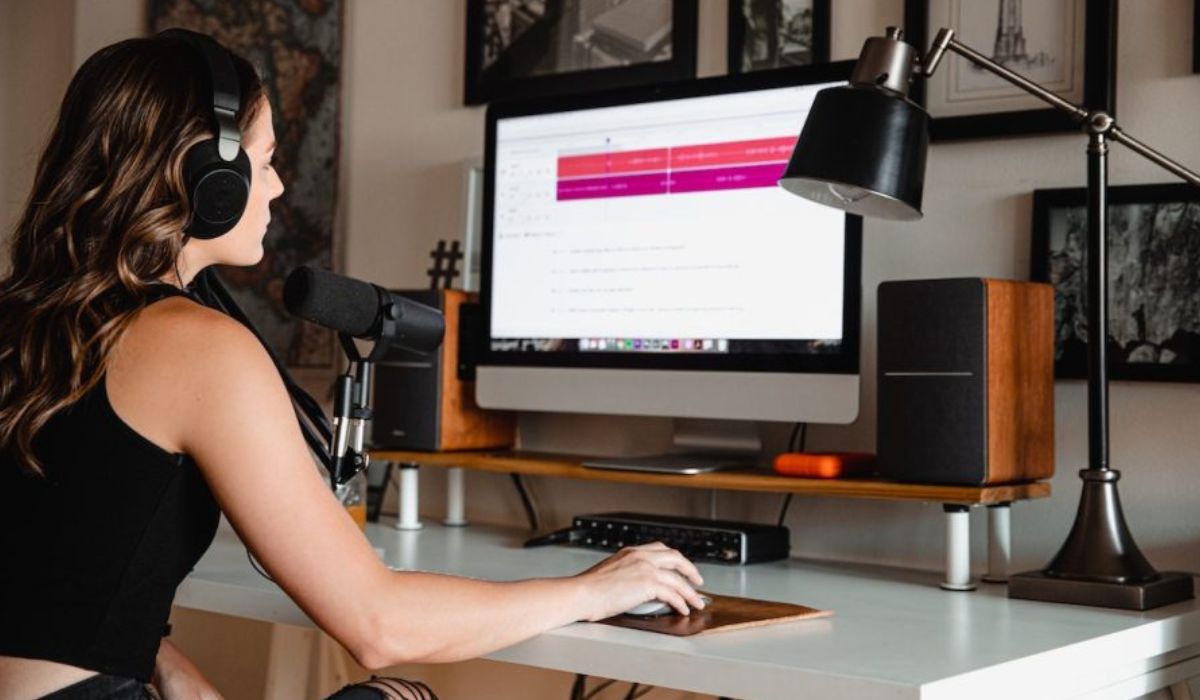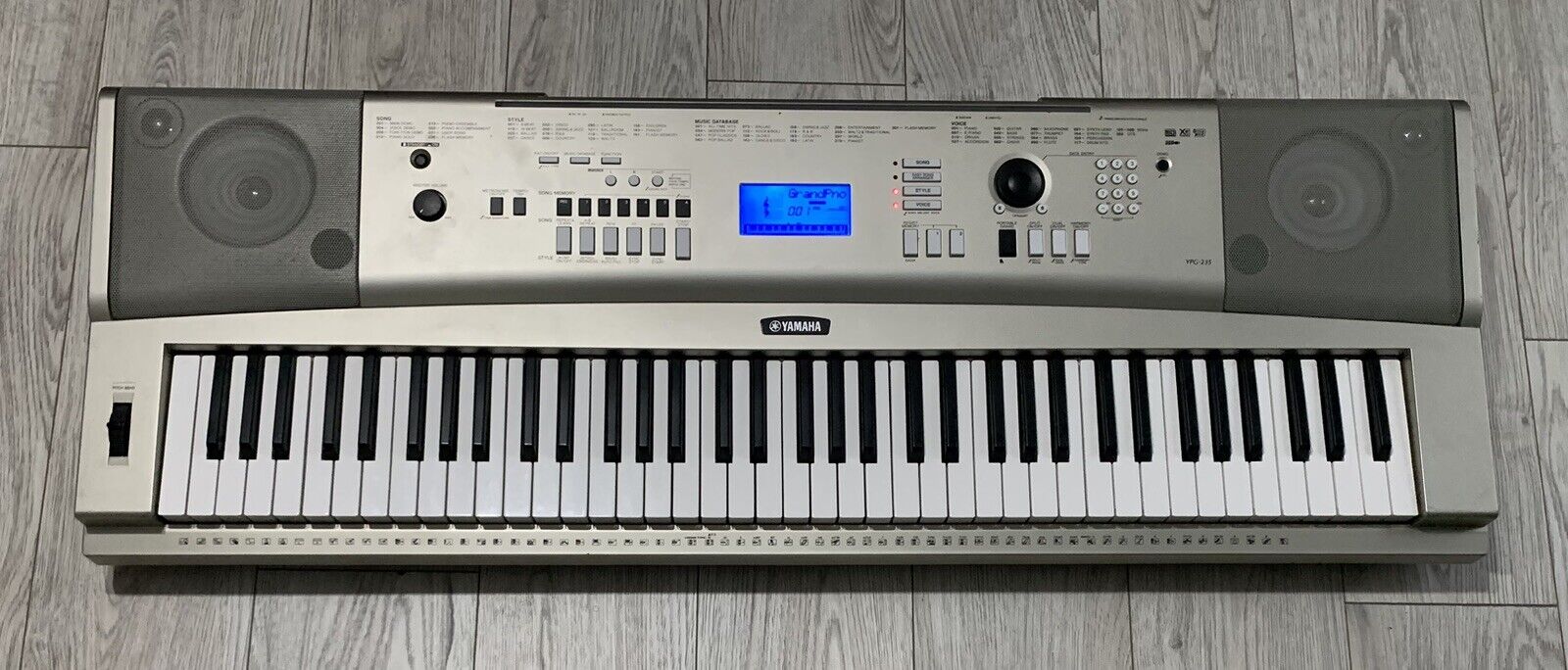Home>Production & Technology>Metronome>How To Know When You Are Ready To Bump Up The Speed On A Metronome
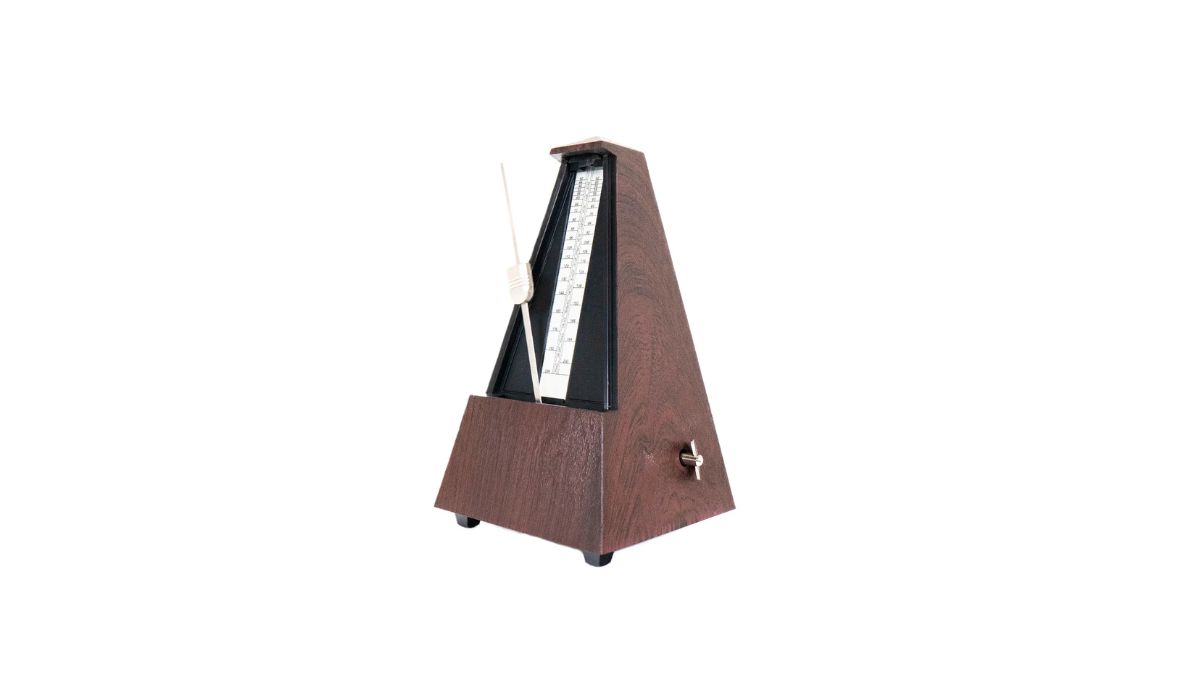

Metronome
How To Know When You Are Ready To Bump Up The Speed On A Metronome
Published: January 13, 2024
Discover the signs that indicate you're ready to increase the speed on your metronome. Fine-tune your music practice with expert tips and guidance.
(Many of the links in this article redirect to a specific reviewed product. Your purchase of these products through affiliate links helps to generate commission for AudioLover.com, at no extra cost. Learn more)
Table of Contents
- Introduction
- Assessing your current skill level
- Understanding the purpose of a metronome
- Establishing a solid foundation with slower speeds
- Mastering rhythmic accuracy and control
- Developing coordination and synchronization
- Consistently maintaining tempo
- Recognizing signs of readiness for a speed increase
- Gradually increasing the metronome speed
- Practicing challenging passages with faster tempos
- Troubleshooting common difficulties
- Conclusion
Introduction
Playing music with a metronome is an essential aspect of developing your skills as a musician. A metronome is a valuable tool that helps you maintain a consistent tempo and improve your timing and rhythm. Whether you’re a beginner or an experienced player, using a metronome can greatly enhance your playing ability.
But how do you know when you’re ready to bump up the speed on a metronome? When should you start increasing the tempo? In this article, we’ll explore the signs that indicate you’re ready to advance to faster speeds on a metronome.
The journey of mastering the metronome begins with assessing your current skill level. This is crucial, as it allows you to set realistic goals and track your progress along the way. It’s important to remember that improving rhythm and timing takes time and practice, and starting at a pace that is too fast may result in frustration and limited progress.
By understanding the purpose of a metronome, you can appreciate its role in building a solid musical foundation. A metronome not only helps you stay on beat but also trains your internal sense of time. It teaches you to develop a steady tempo and aids in achieving rhythmic precision.
Establishing a solid foundation with slower speeds is vital. It allows you to focus on accuracy and control, ensuring that your playing is clean and precise. Playing slowly also enables you to dissect complex musical passages, identify challenging sections, and work on them methodically.
As you gain more control and accuracy, you’ll find yourself naturally developing coordination and synchronization. These skills are essential for playing more complex and intricate musical pieces. They require a strong rhythmic foundation, which is cultivated through dedicated practice with a metronome.
Assessing your current skill level
Before you can determine if you’re ready to increase the speed on a metronome, it’s important to assess your current skill level. This will give you a realistic understanding of where you stand and help you set appropriate goals for improvement. Here are a few factors to consider when evaluating your abilities:
- Timing: How well do you stay on beat? Do you consistently play in time with the metronome? If you often find yourself rushing or lagging behind, it may indicate that you need to work on your sense of timing.
- Rhythmic accuracy: Are you able to play complex rhythms accurately? Can you maintain a steady beat while executing intricate rhythmic patterns? If your rhythm is inconsistent or if you struggle with complex rhythms, you may need to focus on improving your rhythmic accuracy.
- Control: How much control do you have over your playing? Can you maintain a consistent volume and dynamics? Do you have control over your technique? If you lack control or find yourself making frequent mistakes, it may be necessary to refine your skills before increasing the speed.
- Comfort level: Are you comfortable playing at your current tempo? Does it feel challenging but manageable? If you feel overwhelmed and constantly struggle to keep up, it’s a sign that you may need to work on your skills before attempting a faster pace.
Take some time to honestly assess these factors and reflect on your playing. It’s crucial to be aware of your strengths and weaknesses as a musician. This self-realization will help you set realistic goals and identify areas that need improvement.
Remember, there’s no rush to increase the metronome speed. It’s better to take the time to build a strong foundation and develop solid skills than to rush into faster tempos without being fully prepared. Be patient with yourself and prioritize consistent progress over speed.
Understanding the purpose of a metronome
A metronome might seem like a simple device, but its role in music practice and performance is crucial. It serves as a guide, helping you maintain a steady tempo and develop a sense of rhythm. Understanding the purpose of a metronome can greatly enhance your practice sessions and overall musicality.
One of the primary functions of a metronome is to provide a consistent beat. It ensures that you play in time, without rushing or dragging. By practicing with a metronome, you train your internal sense of time, allowing you to develop a more accurate and steady tempo. This is especially important when playing with other musicians or in an ensemble setting.
In addition to tempo control, a metronome helps you grasp the concept of subdivisions. Subdivisions refer to the division of beats into smaller rhythmic units. By setting the metronome to a specific tempo and practicing along with it, you develop an understanding of how each beat can be further divided into smaller notes or rests. This understanding is crucial when working with complex rhythms or syncopated patterns.
A metronome also aids in developing rhythmic precision. It allows you to focus on playing each note or rest at the exact moment it should occur. This helps eliminate unintentional hesitations or uneven timing, resulting in a cleaner and more professional-sounding performance.
Another important aspect of a metronome is its ability to improve your overall sense of timing. As you practice with a metronome consistently, you start to develop an internal pulse that guides your playing. This internal timing becomes valuable when you’re performing without a metronome or playing in a group, as you’ll have a more natural sense of rhythm and be able to adapt to different musical situations.
Lastly, the metronome serves as a gauge of progress. By gradually increasing the metronome speed over time, you can measure and track your improvement. It’s satisfying to see that you’re able to handle faster tempos with ease, and it motivates you to continue practicing and pushing your boundaries.
Understanding the purpose of a metronome allows you to approach your practice sessions with intention and focus. It helps you develop a strong sense of rhythm, precise timing, and overall musicality. Incorporating a metronome into your practice routine is essential for musicians of all levels, as it cultivates discipline, accuracy, and a solid foundation for future growth.
Establishing a solid foundation with slower speeds
When it comes to using a metronome, starting with slower speeds is key to building a strong foundation in your playing. Playing at slower tempos allows you to focus on accuracy, control, and technique, ensuring that your playing is clean and precise. Let’s explore why establishing this solid foundation is so important.
Slower speeds provide an opportunity to develop a deep understanding of the music. By playing at a slower pace, you can dissect complex musical passages, identify challenging sections, and work on them methodically. This allows you to break down the music into smaller, more manageable parts, enabling you to master each element before moving on to the next.
In addition, slower speeds allow you to cultivate your sense of timing. Playing with a metronome at a slower tempo helps you internalize the rhythm and groove of the music more effectively. It enables you to develop a subconscious connection to the beat, ultimately improving your sense of timing and rhythmic accuracy.
Playing at slower speeds also allows you to focus on your technique. When practicing challenging passages at a slower tempo, you can pay close attention to your hand position, finger placement, and overall technique. This deliberate practice helps refine your movements and eliminate any unnecessary tension or inefficiencies in your playing.
Furthermore, slower tempos are beneficial for honing your control and dynamics. By playing at a slower speed, you have more time to focus on the nuances of your playing. You can experiment with different articulations, explore the full range of dynamics, and develop a more expressive and nuanced musical interpretation.
Additionally, slower speeds provide an opportunity for mental and physical relaxation. Playing music can be mentally demanding, and starting with slower tempos allows you to approach the music in a more relaxed and focused manner. It gives you the time to fully absorb the music and ensures that you’re not rushing through the piece without truly understanding and appreciating its intricacies.
Remember, building a solid foundation takes time and patience. Starting at slower speeds may feel frustrating at times, as you may have the desire to play faster. However, resist the temptation to increase the metronome speed prematurely. Embrace the slow tempo as an opportunity to refine your skills, develop precision, and build a strong musical foundation.
By establishing this solid foundation with slower speeds, you’ll be better equipped to handle faster tempos in the future. As you gradually increase the speed on the metronome, you’ll find that your playing becomes more effortless, controlled, and confident. So start at a comfortable pace, focus on accuracy and control, and enjoy the journey of musical growth that lies ahead.
Mastering rhythmic accuracy and control
Rhythm is at the heart of music, and mastering rhythmic accuracy and control is essential for becoming a proficient musician. Playing with a metronome is a powerful tool for developing these skills. Let’s explore how you can use a metronome to enhance your rhythmic precision and control.
First and foremost, a metronome provides a consistent beat that serves as a reference point for your playing. It helps you stay on tempo and ensures that you’re playing in time. By practicing with a metronome, you develop a strong internal sense of time, which allows you to accurately execute rhythms and maintain a steady tempo.
One of the key benefits of using a metronome to work on rhythmic accuracy is the ability to practice subdivision. Subdivision is the division of beats into smaller rhythmic units. The metronome helps you understand how each beat can be further divided into smaller notes or rests. By setting the metronome to a specific tempo and practicing with subdivisions, you develop a sense of timing and precision in executing complex rhythmic patterns.
As you practice with the metronome, focus on playing each note or rest exactly on the beat indicated by the metronome. This attention to detail helps eliminate hesitations and inaccuracies in your playing. The consistent pulse provided by the metronome ensures that your rhythm is steady and precise. Listen closely to the metronome and try to align your playing with its beat as accurately as possible.
Playing with a metronome also helps you develop control over your rhythm. It allows you to experiment with different rhythmic patterns and explore the subtleties of timing. You can practice playing ahead of or behind the beat, experimenting with different accents, or adding rhythmic variations. This experimentation enhances your control over rhythm and allows you to infuse your playing with musicality and expression.
Furthermore, the metronome can help you identify and correct rhythmic weaknesses. If you notice that you consistently rush or drag behind the beat, the metronome can be a valuable tool for addressing these issues. Set the metronome to a slower tempo and gradually increase it as you become more comfortable and accurate. By practicing at a slower pace with the metronome, you can gradually build up your ability to execute rhythms accurately and consistently.
Remember, mastering rhythmic accuracy and control takes time and practice. Be patient and embrace the process. Start with slower tempos and gradually increase the speed as you become more comfortable. The metronome is your guide and partner in developing these crucial skills. Use it effectively, listen closely, and focus on playing with precision and control. With dedication and consistent practice, you’ll witness significant improvements in your rhythmic accuracy and control, enhancing your overall musicality.
Developing coordination and synchronization
Coordination and synchronization are essential skills for any musician, regardless of the instrument they play. These skills allow you to play complex musical passages with precision, fluidity, and musicality. Developing coordination and synchronization is made easier with the help of a metronome. Let’s explore how you can use a metronome to enhance these skills.
A metronome serves as a constant reference point for your playing, providing a steady beat that guides your rhythm. By practicing with a metronome, you develop a strong sense of timing and learn to synchronize your playing with the beat. This synchronization is crucial for creating a tight rhythmic foundation when playing with others or in an ensemble setting.
One of the primary ways a metronome helps in developing coordination is by enabling you to practice complex rhythms at a slower tempo. As you set the metronome to a slower speed, you have the opportunity to practice intricate rhythmic patterns that may otherwise be challenging at faster tempos. By breaking down these patterns and working on them step by step, you gradually build the coordination necessary to execute them accurately and seamlessly.
Playing with a metronome also aids in developing coordination between your hands or different parts of your body. If you play a polyphonic instrument like the piano or guitar, the metronome helps in synchronizing the rhythm and melody parts. By setting the metronome to a specific tempo, you can practice playing each hand separately and gradually integrate them while maintaining a consistent and synchronized rhythm.
Furthermore, the metronome allows you to work on coordination between different elements of your playing, such as finger movement, breath control, or footwork. By setting the metronome to a steady beat, you can practice exercises that involve these different elements, gradually building the coordination necessary for intricate and complex musical passages.
When using a metronome to develop coordination and synchronization, it’s crucial to start at a comfortable tempo. Begin with slower speeds and gradually increase the tempo as you become more comfortable and precise. This gradual progression allows your muscles and mind to adapt to the coordination requirements, preventing overwhelm and ensuring steady progress.
In addition to practicing with the metronome, it can be helpful to incorporate other rhythm exercises into your practice routine. Clapping, tapping, or using rhythm instruments can further enhance your coordination and synchronization abilities. These exercises, coupled with the regular use of a metronome, will help you develop a strong sense of rhythm and coordination, enabling you to play intricate musical passages with ease.
Remember, developing coordination and synchronization takes time and consistent practice. Be patient and dedicate regular practice sessions to these skills. Use the metronome as your guide, and gradually challenge yourself with increasing tempos or more complex rhythmic patterns. With persistence, you’ll be amazed at how your coordination and synchronization skills improve, allowing you to bring a new level of musicality and precision to your playing.
Consistently maintaining tempo
Maintaining a consistent tempo is a fundamental skill for any musician. It allows you to stay in sync with other performers, maintain a steady rhythm, and deliver a polished and professional performance. Using a metronome is an invaluable tool for developing the ability to consistently maintain tempo. Let’s explore how you can use a metronome to enhance this skill.
A metronome provides a constant and unchanging beat, serving as a reliable reference point for your playing. By practicing with a metronome, you train your internal sense of time and learn to align your playing with the steady beat. This disciplined approach helps you develop the ability to maintain a consistent tempo throughout a piece of music.
One of the key benefits of using a metronome is that it prevents you from rushing or dragging in your playing. The metronome acts as a guide, keeping you grounded and ensuring that you stay on beat. By constantly listening to the metronome and adjusting your playing to match its tempo, you develop the habit of maintaining a steady tempo, even during challenging passages.
Practicing with a metronome also helps you build stamina and endurance. As you play along with the metronome at a consistent tempo, you develop the physical and mental strength to sustain a steady beat for longer durations. This is crucial for pieces that require you to maintain a consistent tempo for extended periods of time.
In addition to practicing with a metronome during rehearsal, it’s beneficial to incorporate metronome practice in your warm-up routine. Start by playing simple exercises or scales along with the metronome, gradually increasing the tempo as you become more comfortable. This regular metronome practice ingrains the habit of maintaining a consistent tempo from the very beginning of your practice session.
Another useful technique when working on consistently maintaining tempo is to practice with different subdivisions. Set the metronome to a slower tempo and focus on playing along with different rhythmic subdivisions, such as eighth notes, triplets, or sixteenth notes. This helps you develop a strong internal sense of pulse and ensures that you can stay on tempo, regardless of the rhythmic complexity.
As with any aspect of music practice, consistency is key. Make it a habit to practice with a metronome regularly, dedicating specific practice sessions to tempo control. Gradually increase the tempo on the metronome as you become more comfortable and confident, challenging yourself to maintain a consistent tempo at faster speeds.
Remember, developing the ability to consistently maintain tempo takes time and patience. Be diligent in your practice, paying attention to detail, and striving for accuracy. With regular use of a metronome and focused practice, you’ll cultivate the skill of staying in tempo, leading to more polished and professional performances.
Recognizing signs of readiness for a speed increase
Knowing when you’re ready to increase the speed on a metronome is crucial for making progress in your musical journey. It’s important to recognize the signs that indicate you’re prepared for a speed increase, as pushing yourself too quickly can lead to frustration and hinder your development. Here are some key signs to look out for:
- Consistency: One of the primary signs of readiness for a speed increase is consistency in your playing. If you can consistently play a musical passage or exercise accurately and confidently at a certain tempo, it’s a good indicator that you’re ready to progress to a faster speed. Consistency demonstrates that you have developed the necessary control and muscle memory for the current tempo.
- Rhythmic accuracy: Another sign of readiness is your ability to maintain rhythmic accuracy as you play. When you can execute complex rhythmic patterns with precision and without hesitations or inaccuracies, it suggests that you have a solid sense of timing and are ready to tackle faster tempos.
- Comfort level: Feeling comfortable playing at your current tempo is a positive indication that you’re ready to increase the speed. If you find that you’re no longer being challenged, and the current tempo feels manageable and natural, it may be time to push yourself and explore higher tempos.
- Control: Having control over your playing is a crucial factor to consider when deciding whether you’re ready for a speed increase. If you can maintain control over factors such as dynamics, articulation, and technique while playing at your current tempo, it demonstrates your ability to handle more demanding speeds.
- Confidence: Confidence in your playing is an important psychological factor when it comes to increasing the speed on a metronome. If you feel confident in your ability to tackle a faster tempo and believe in your skills, it’s a positive sign that you’re ready to push your boundaries and take on new challenges.
It’s important to note that these signs may vary depending on the piece or exercise you’re working on. What may indicate readiness for one passage may not apply to another. Pay attention to how you feel and assess each section separately to determine if you’re prepared for a speed increase.
It’s also crucial to respect your current skill level and not rush the process. Developing rhythm and speed takes time and consistent practice. Pushing yourself too quickly can result in sloppy playing and frustration. Take the time to build a strong foundation and meet each milestone with confidence before moving on to faster tempos.
Ultimately, recognizing signs of readiness for a speed increase is a combination of objective assessment and personal intuition. Listen to your playing, evaluate your progress, and trust your instincts. With patience, practice, and a thoughtful approach, you’ll be able to increase the speed on a metronome at the appropriate time, further advancing your musical skills.
Gradually increasing the metronome speed
When you’re ready to push yourself and increase the speed on a metronome, it’s important to do so gradually and methodically. Gradually increasing the metronome speed allows you to challenge yourself while maintaining control and accuracy in your playing. Here are some key steps to follow when adjusting the tempo:
1. Establish a baseline: Begin by setting the metronome at a tempo where you feel comfortable and in control. This will serve as your starting point or baseline. It’s essential to select a tempo that allows you to execute the musical passage or exercise with accuracy and confidence.
2. Increase in small increments: Rather than making drastic jumps in speed, gradually increase the metronome tempo in small, manageable increments. This ensures that you can adapt to the changing speed without compromising your technique or musicality. A good rule of thumb is to increase the tempo by 5-10 beats per minute (BPM) at a time.
3. Maintain accuracy and control: As you increase the tempo, pay close attention to maintaining rhythmic accuracy and control in your playing. Be aware of any areas where you may start to lose control or accuracy, and focus on refining those sections before increasing the speed further. It’s better to prioritize precision over speed.
4. Practice in small sections: Rather than attempting to play the entire piece or exercise at the new tempo right away, break it down into smaller sections. Focus on mastering each section at the increased speed before moving on to the next. This approach allows you to concentrate on specific challenges and ensure that you’re maintaining the desired tempo consistently throughout the piece.
5. Use gradual increases as benchmarks: Set small milestones for yourself as you increase the tempo. For example, when you reach a certain BPM, consider it a benchmark for your progress. Acknowledge and celebrate these milestones as they signify your growth and improvement. These benchmarks can serve as motivation to keep pushing yourself.
6. Practice with a metronome and without: Once you’ve developed comfort and control at a specific tempo with the metronome, practice without relying on it. This helps you internalize the tempo and rhythm, allowing you to maintain the desired speed without the constant guidance of the metronome. This step reinforces your ability to consistently play at the increased tempo.
7. Be patient and persistent: Increasing the metronome speed is a gradual process that requires patience and persistence. Don’t rush the process or become discouraged if progress seems slow. Keep practicing consistently, focusing on accuracy and control at each tempo, and you’ll gradually build the necessary skills to handle faster speeds.
Remember, the goal is not just to play faster, but to play with accuracy, musicality, and control. Be attentive to your technique and musical expression throughout the process of increasing the metronome speed. By following these steps and embracing a systematic approach, you’ll be able to gradually increase the tempo on a metronome while maintaining a high level of skill and precision in your playing.
Practicing challenging passages with faster tempos
As you progress in your musical journey, there will come a time when you need to tackle challenging passages at faster tempos. Practicing these passages with a metronome can help you develop the necessary speed, accuracy, and control. Here are some strategies to effectively practice challenging passages with faster tempos:
1. Break it down: Start by breaking the challenging passage into smaller sections. Work on each section individually, ensuring that you can play it accurately and comfortably at a slow tempo. Once you have a solid grasp on the sections, gradually increase the metronome speed, focusing on maintaining the same accuracy and control.
2. Use a variety of rhythms: Experiment with different rhythmic variations to challenge yourself further. Play the passage in different rhythms, such as dotted rhythms, syncopations, or triplets. This helps you develop flexibility and adaptability in your playing, making it easier to handle faster tempos.
3. Practice with accents: Add accents to emphasize certain notes or beats within the passage. This not only improves your articulation and phrasing but also helps develop dynamic control. Practicing with accents at slower tempos first allows you to perfect the articulation before increasing the speed.
4. Utilize different practice techniques: Utilize techniques such as rhythmic displacement, where you shift the starting point of each note within the passage. This challenges your ability to maintain a steady tempo and improves your overall rhythmic accuracy at faster speeds.
5. Gradually increase the tempo: Start by practicing the passage at a tempo where you can comfortably play it with precision. Slowly increase the metronome speed in small increments, focusing on maintaining accuracy and control at each step. Take breaks and revisit slower tempos if needed, ensuring that you are consistently playing with accurate technique and musicality.
6. Record and analyze your progress: Record yourself playing the challenging passage at different tempos. Listen back and assess your performance, noting areas where you may need to refine your technique or increase your speed. Use these recordings as a reference to track your progress over time.
7. Practice with a metronome and without: Once you can play the passage accurately and confidently at a faster tempo with the metronome, practice without relying on it. This allows you to internalize the rhythm and tempo, further solidifying your ability to execute the passage at higher speeds without external guidance.
8. Vary the dynamics: Experiment with different dynamic levels while practicing the challenging passage at faster tempos. Focus on maintaining control and expressiveness even as the speed increases. This helps you develop the ability to perform the passage with musicality and finesse, regardless of the tempo.
Remember, practicing challenging passages with faster tempos requires patience, persistence, and attention to detail. Be consistent in your practice efforts and celebrate small victories along the way. With time and dedicated practice, you’ll gradually build the technical and musical skills needed to confidently navigate complex passages at faster speeds.
Troubleshooting common difficulties
When practicing with a metronome and working on increasing the speed, you may encounter some common difficulties. These challenges are normal, and understanding how to troubleshoot them will help you overcome obstacles and continue progressing in your musical journey. Here are some common difficulties and effective ways to address them:
1. Tension: One common difficulty is experiencing tension while trying to play at faster tempos. Tension can hinder your playing, affecting your accuracy and control. Focus on identifying areas of tension in your body and strive to relax those areas. Practice slow, deliberate movements to develop a relaxed and efficient technique. Incorporating regular stretching or warm-up exercises can also help alleviate tension.
2. Inaccuracy: Accuracy can be a challenge at higher speeds, as it requires precise finger or bow control, and coordinated movements. If you find that you’re consistently missing notes or playing with rhythmic inaccuracies, slow down the tempo and practice the passage at a pace where you can play it accurately. Gradually increase the speed once you have established control and accuracy.
3. Loss of musicality: Faster speeds can sometimes lead to a loss of musicality, where the focus becomes solely on keeping up with the tempo rather than expressing the musicality of the piece. To address this, practice the passage at a slower tempo with expressiveness and musical phrasing. As you increase the tempo, prioritize maintaining the same musicality and expression. Take time to phrase and shape the music, paying attention to dynamics, articulations, and overall interpretation.
4. Breathing and breath control: Breath control is particularly important for wind instrument players or vocalists. As the tempo increases, it becomes a challenge to coordinate breathing with the music. Practice exercises that specifically target breathing techniques and control. Focus on inhaling and exhaling in a relaxed and controlled manner, allowing for efficient breath management during faster passages.
5. Mental focus and concentration: Maintaining concentration and focus can be difficult, especially when playing challenging passages at faster tempos. Minimize distractions in your practice space and develop mental strategies to stay engaged. Break the passage into smaller sections and practice with intense focus, gradually integrating the sections as you become more comfortable. Regular mindfulness or meditation practice may also help improve mental focus and concentration.
6. Fatigue and endurance: Playing at faster tempos requires stamina and endurance. If you find yourself tiring quickly, take breaks and gradually build up your endurance. Increase the speed in small increments, allowing time for your muscles to adjust to the increased demands. Regular physical exercise, including exercises that target finger strength and dexterity, can also help improve endurance.
7. Patience and persistence: Lastly, remember that progress takes time and consistent effort. Be patient with yourself and maintain a positive mindset. Celebrate small victories and acknowledge that each step forward is a valuable achievement. Stay motivated and remind yourself of the long-term benefits of practicing with a metronome and gradually increasing the tempo.
Remember that addressing difficulties is an ongoing process. Troubleshoot one challenge at a time and dedicate focused practice sessions to specific areas of improvement. With perseverance and a systematic approach to troubleshooting, you’ll overcome these difficulties and continue to make progress in your musical journey.
Conclusion
Working with a metronome and gradually increasing the speed is a transformative practice that can significantly enhance your musicality and skills as a musician. It allows you to develop rhythmic accuracy, control, coordination, and the ability to maintain a consistent tempo. By recognizing the signs of readiness for a speed increase and following a systematic approach, you can navigate the challenges and make steady progress.
The process begins with assessing your current skill level, understanding the purpose of a metronome, and establishing a solid foundation at slower speeds. As you build accuracy and control, you can develop coordination, synchronization, and a strong sense of timing. Recognizing signs of readiness, you can gradually increase the metronome speed, practicing challenging passages with discipline and focus.
While you navigate the journey, be mindful of troubleshooting common difficulties such as tension, inaccuracy, loss of musicality, breathing control, concentration, fatigue, and patience. Addressing these challenges with persistence and a positive mindset will contribute to your growth as a musician.
In conclusion, the metronome is a valuable tool for every musician, regardless of skill level or instrument. It provides a foundation for rhythmic accuracy, coordination, and control that will serve you well in all aspects of your musical endeavors. Embrace the process, be patient with yourself, and celebrate your progress along the way. With consistent practice, utilizing the metronome effectively, and a commitment to improvement, you will unlock a new level of musicality and reach your goals as a musician.



